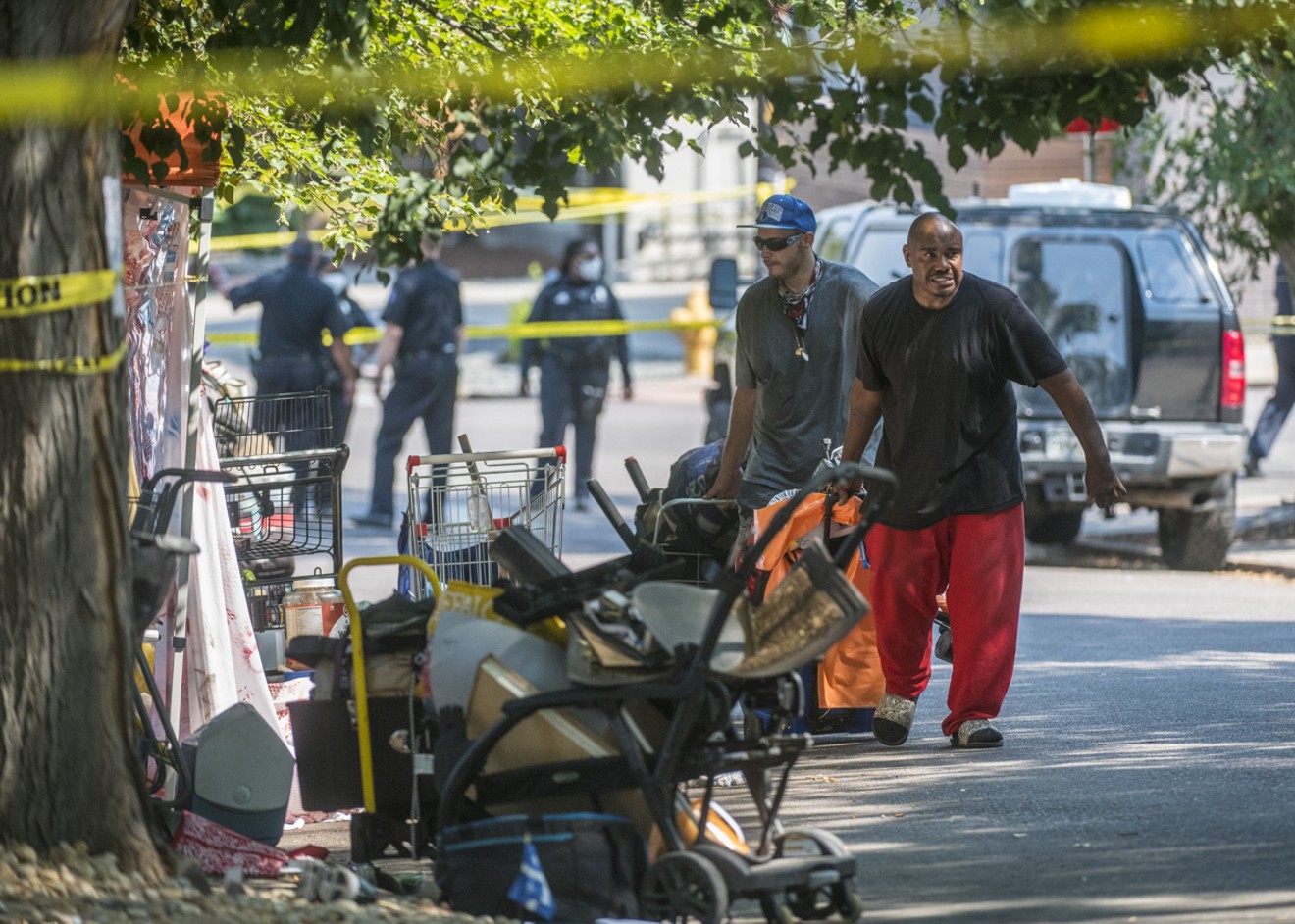Racial minorities are significantly over-represented among those experiencing homelessness in metro Denver, a new study shows.
"We need to address this if we want to make meaningful progress on homelessness," says Matt Meyer, executive director of the Metro Denver Homeless Initiative, which just released its State of Homelessness 2020 Report.
The report, which pulls from multiple data sources to help quantify the number of people experiencing homelessness in the metro area, indicates that Black and Native American individuals are represented disproportionately in the groups of those who are homeless or using services related to homelessness.
The report also notes that those experiencing homelessness in metro Denver are mostly male, usually have been homeless before, and often have higher rates of "barriers related to physical or mental disabilities, chronic health conditions, and/or substance use than other subpopulations."
MDHI conducts the annual Point in Time count, which attempts to document the number of homeless individuals in the metro region; Denver, Adams, Arapahoe, Douglas, Boulder, Broomfield and Jefferson counties are all included in the project.
The 2020 count, which was conducted one night in January, resulted in a tally of 6,104 people; it, too, indicated a disproportionate number of racial minorities among the region's homeless. While Black residents in the metro area make up just 5.3 percent of its population, 23.2 percent of those tallied in the Point in Time count were Black. And although Native Hawaiian/Pacific Islanders and American Indian/Alaskan Natives make up just .1 percent and .8 percent of the region's population, respectively, those categories account for 1.5 percent and 5.6 percent of the people in the Point in Time count.
While the Point in Time count can be useful for homeless service providers and policy makers, it's generally considered an undercount. This new MDHI report helps paint a more accurate picture of the homeless situation, since it includes the number of unique individuals shown as having activity on the region's Homeless Management Information System (HMIS), "a statewide data system that collects and tracks data on those experiencing homelessness," between July 1, 2019, and June 30, 2020.
The total was 31,207 people, 26.4 percent of whom were Black. The American Indian/Native Alaskan and Native Hawaiian/Pacific Islander categories were also over-represented.
The MDHI report offers some concluding thoughts, including the suggestion that homelessness can be reduced in part by addressing how it starts.
"Actual data from the Point-in-Time (PIT) count indicate the top reasons of homelessness in the region are high housing costs, a lost job or inability to find work, and relationship or family break-up as the most common causes among those experiencing homelessness. In fact, the leading cause of homelessness, not just in this region but around the country, is a lack of affordable housing," the report states.
The report also says that service providers and governments in metro Denver must strive to "ensure an equitable response with the ultimate goal of eliminating overrepresentation of any one population."
Any response to racial inequity requires hearing from those who are experiencing or have experienced homelessness, the report adds. "Beyond the homelessness response, inequities in other systems such as criminal justice, child welfare, and healthcare must be addressed," it continues. "Additionally, we must seek to enhance the supports that contribute to the economic stability of the region’s households, such as quality childcare, employment at a living wage, and education opportunities, with these supports specifically targeting housing-burdened households."
The advocacy organization Denver Homeless Out Loud has come up with an even higher count of the number of Black, Indigenous and other people of color experiencing homelessness in Denver: 5,256. Reflecting that estimate, it will hold a Race and Homelessness Vigil in front of the Denver City and County Building for 5,256 minutes, from the morning of Wednesday, October 14, through the night of Saturday, October 17.
"Turning to a racist police force to 'solve' homelessness only lands more BIPOC in jail and in danger," organizers say. "When an individual is criminalized for being homeless, it creates further barriers to housing. We cannot stand for the racism of mass homelessness of BIPOC. Every minute that we stay in front of City Hall is a minute to stand for every single BIPOC who is homeless in our city. We stand for housing, not police, NOW."
[
{
"name": "Air - MediumRectangle - Inline Content - Mobile Display Size",
"component": "12017618",
"insertPoint": "2",
"requiredCountToDisplay": "2"
},{
"name": "Editor Picks",
"component": "17242653",
"insertPoint": "4",
"requiredCountToDisplay": "1"
},{
"name": "Inline Links",
"component": "18838239",
"insertPoint": "8th",
"startingPoint": 8,
"requiredCountToDisplay": "7",
"maxInsertions": 25
},{
"name": "Air - MediumRectangle - Combo - Inline Content",
"component": "17261320",
"insertPoint": "8th",
"startingPoint": 8,
"requiredCountToDisplay": "7",
"maxInsertions": 25
},{
"name": "Inline Links",
"component": "18838239",
"insertPoint": "8th",
"startingPoint": 12,
"requiredCountToDisplay": "11",
"maxInsertions": 25
},{
"name": "Air - Leaderboard Tower - Combo - Inline Content",
"component": "17261321",
"insertPoint": "8th",
"startingPoint": 12,
"requiredCountToDisplay": "11",
"maxInsertions": 25
}
]












